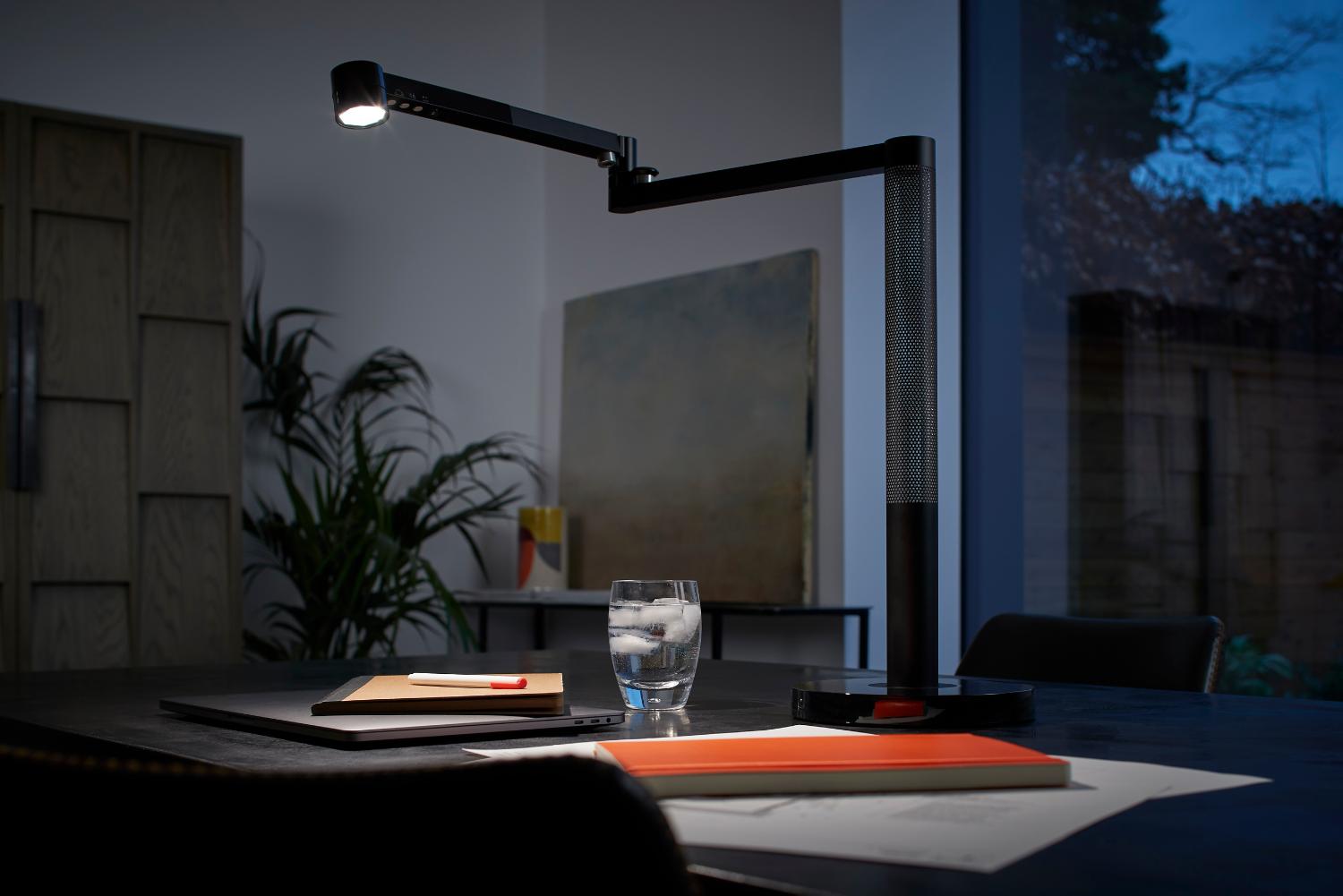How to light your home
As the clocks go back and the nights get longer, it is important to light your home in a way that not only feels comfortable but also provides the right light for the time of day.
“Lighting is vital to how we experience an environment. But it’s also extremely personal," says Dyson Physicist, Alex Kember. "Pause and think about what works for how you live. We have evolved under the changing colours and rhythms of daylight for millions of years. So, it’s no surprise that traditional light fittings with their on/off switches and a fixed colour temperature don’t provide the versatility we really need. The lighting in your home should be able to adapt to your patterns throughout the day - from a gradual wake up and getting ready in the morning, to creating your personal home office and then winding down in the evening.”
The Dyson Solarcycle Morph is engineered to support your body clock. Featuring a unique time, date and location-driven algorithm, the light gradually adjust its colour temperature and brightness in relation to your local daylight.
Not too warm. Not too cool. Just right.
Colour temperature is key to lighting a space that works with you rather than against you. Often a light source can either feel welcoming and comforting or jarring and unnatural. While brightness plays a role, this is could also be down to colour temperature – how warm or cool the light is.
What is light colour temperature and why is it important?
- Colour temperature is a way of measuring different types of visible light. Measured in Kelvin, it is important as it allows us to compare natural and artificial light sources along a spectrum.
- Visible light is just a special type of electromagnetic radiation, with infrared and UV light being other types. The difference between them is the wavelength of the light wave. In the visible part of the spectrum, different colours correspond to different wavelengths ranges.
- Cool light has a higher proportion of shorter wavelengths and is measured at around 6,500 Kelvin. Longer wavelengths produce more orange or red light; referred to as ‘warm’ light this is around 2,700-1,800 Kelvin.
- Natural light changes colour throughout the day as the ratio of the dominant wavelengths changes. This happens as the rotation of the earth changes the distance the wavelengths travel through the atmosphere, as well as particles that scatter light. As a result, the the ratio of these colours in daylight change throughout the day – which is why the sky appears a cool, blue at midday and warm, orange at sunrise and sunset.
- By linking our home lighting to natural light and making use of a wide spectrum of colour temperatures, we can help recreate the natural changes in light in our homes – to deliver the right type of light for the time of day.
What is the ‘best’ colour temperature for indoor lights?
- During the pandemic, we spent more time at home than ever before and turned previously single-use rooms into multi-purpose spaces. With people exercising, working and relaxing all in the same room, finding the ideal colour temperature for different tasks became a challenge.
- It's important that you have the right light for the task at hand as well as the time of day. This means a light with a variable colour temperature and brightness is worth considering.
- During the development of the Dyson Solarcycle Morph's unique daylight tracking algorithm, Dyson engineers took data from over a million measurements of light conditions on the earth’s surface at different times of the day and year. This algorithm controls three warm and three cool LEDs that work in tandem to simulate a range of daylight colour temperatures from warm 2,700 to a cool 6,500 Kelvin.
What is the best way to light a multi-functional space?
- Layered lighting is key to creating a beautiful yet multi-functional space. Depending on the task, there are four fundamental ways lights are used in the home: indirect lighting for general illumination; task lighting for high-precision work; feature lighting to highlight art or architectural features, and ambient lighting, which is a warm glow – designed to resemble fire or candlelight.
- Opt for a light that alows you to adjust the colour temperature to suit different tasks and needs.
Can you light a home office to promote concentration and focus?
- Whichever room you make your home office, lighting can help create the feeling of a productive work environment.
- But not all lights are created equal. Light levels need to be right for the task at hand, as inadequate lighting, glare or flicker can cause eye strain – for some, this may make it difficult to focus.
- The Dyson Solarcycle Morph light features study mode, which provides a bright light for high-focus tasks, adjusting its colour temperature throughout the day in line with your location.

What types of lighting are best in a bedroom?
- Just like in your living room, you can layer lighting formats, heights and positions in your bedroom. But your bedroom is the most personal room in the house – and personalising your light set-up here can make a real difference.
- Our eyes and bodies have evolved under the cycles of natural daylight for millions of years. Before artificial light was invented, humans organised their activities around the daylight cycle outdoors, with the setting sun signalling it was time to wind down and prepare to sleep.
- Now artificial light enables us to prolong our waking activity after the sun has set. But if you were to shrink human evolution into 24 hours, electric light would only have existed for the last two seconds.
- Recent studies suggest that unintentional exposure to artificial light late at night (from phone or computer screens for example) tends to disrupt sleep continuity; which can have a knock-on effect on performance throughout the day¹.
- To minimise disruption to your internal clock, consider lights that can support a wind-down in the evening and a gradual wake up in the morning.
- In ambient mode, the stem of the Dyson Solarcycle Morph produces its warmest colour temperature and lowest blue light output for evening relaxation, emitting light at 1,800 Kelvin, to emulate candlelight. It also features a gradual wake-up mode.
[1] Green A, Cohen-Zion M, Haim A, Dagan Y. Evening light exposure to computer screens disrupts human sleep, biological rhythms, and attention abilities. Chronobiol Int. 2017;34(7):855-865. doi: 10.1080/07420528.2017.1324878. Epub 2017 May 26. PMID: 28548897. Read here.

Most lights don't change.
This light changes everything.





